|
Topics in Light Microscopy
Anomalous Birefringence
Anomalous birefringence is simply the result of a material's birefringence
changing in a significant way as a function of the wavelenght of
light. It produces anomalous interference colors in the material being
examined between crossed polarizing filters.
Crocidolite, Higher Birefringence in Red Light (longer Wavelengths)
Very thin fibers appear red between crossed polarizing filters. Thicker
fibers appear blue because of the strong blue color of the mineral.
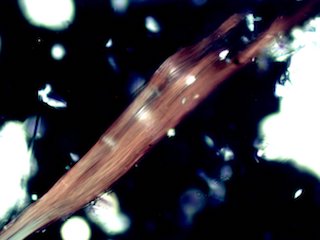
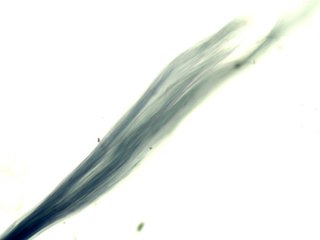
Silicon Carbide, Higher Birefringence in Blue Light (Shorter Wavelenghts)
Blue wavelengths cycle more rapidly than red wavelengths. Yellow interference
color begins for thinner particles and first order red appears
purple because blue is increasing well before red significantly decreases.
This effect changes the color sequence through the whole range of
microscopic silicon carbide particles.
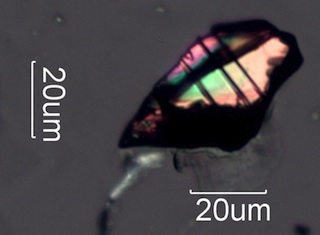
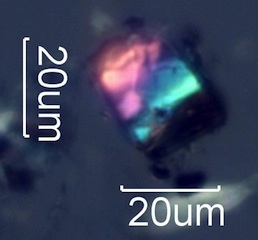
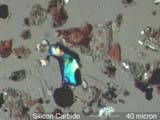
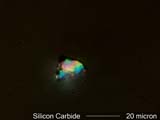
Apparent Birefringence
Polarized light can be depolarized by light scatter or by specular reflection at
an interface that is not aligned with the
orientation of the polarized beam. Birefringence can be induced by stress in
materials that are otherwise isotropic.
Ordered distributions of regular shaped isotropic particles or fibers with a
different refractive indix than an isotropic
matrix can induce an apparent birefringence. Click on the photographs below for
more information.
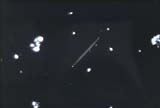
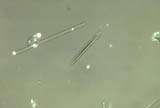
Edge Effect Birefringence
Polarized light is depolarized at the interface between a conductive particle
and a non-conductive mounting medium. This light halo effect with
transmitted crossed polarized light indicates an opaque particle is a wear
metal particle or at least is conductive. Graphite is sufficiently
conductive
to produce this effect. Pencil debris can be distinguished from combustion
residue by this effect.
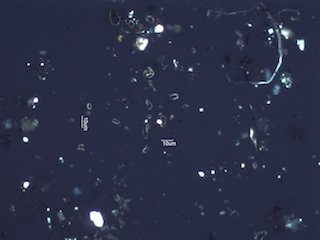

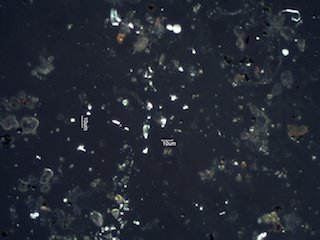
Graphite
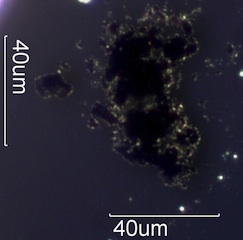
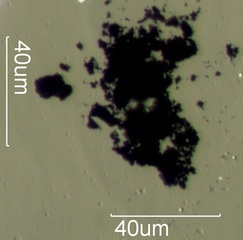
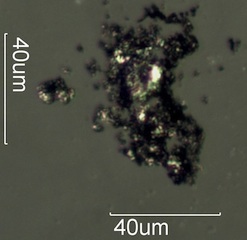
Magnetite Spheres
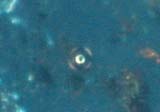
Stress Birefringence
When a material is placed under stress the distribution of the electrons in the
material is changed. The amount of change is different for each
material and is a characteristic of the material. The photoelastic constant of
the matrial is a measure of the electron displacement (strain) as a
function of the load (stress) applied as long as the deformation is elastic,
springs back when the load is removed. If the YOung's Modulus of the
matrial is exceeded then some of the deformation becomes permenant. In some
materials the applied load can be "frozen" in place, as in the case of
high stress glass sheet. Polarized light can make the displacement visible. Both
plastic deformation and elastic deformation result in an
anisotropic distribution of electrons in the material that becomes visible as
interference colors when the object is viewed between crossed linear or
crossed circular polarizing filters. Click on the photographs below for more
information.
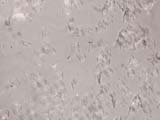 Birefringence from Plastic Deformation in Human Skin Cells
Birefringence from Plastic Deformation in Human Skin Cells
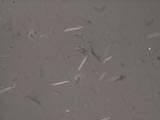 Birefringence from Plastic Deformation in Dog Skin Cells
Birefringence from Plastic Deformation in Dog Skin Cells
 Stress Birefringence in Safety Glass
Stress Birefringence in Safety Glass
Resolution vs Visibility Through the Microscope
The resolution of objects viewed through the light microscope is a calculated
value based on configuration of the microscope.
Visibility is a function of contrast. To take advantage of resolution there must
be sufficient contrast to see the subject
but objects far below the resolution limit of a specific microscope
configuration can be made visible with sufficient
contrast. This is the same phenomena that allows us to see the stars in the
night sky, all of which are far below the
resolution limit of our eyes. A few examples through the microscope are provided
below showing methods of improving the
resolution and/or visibility of objects viewed through the "standard" light
microscope. Click on the photographs below for
more information.
Resolution and Ocular Magnification
The resolution of the microscope is determined by the objective and the
condenser. The ocular must provide sufficient
magnification for the observer to see what is being resolved. The images below
provide a simple example.
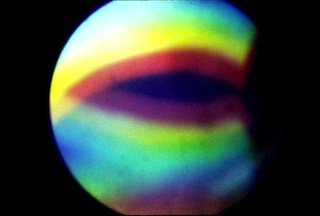
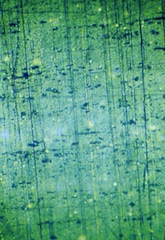
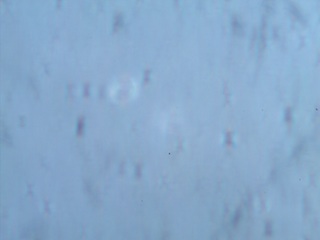
Brightfield vs Darkfield Illumination

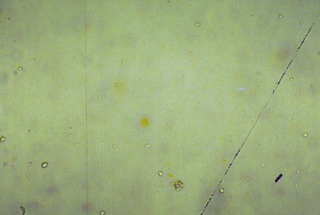
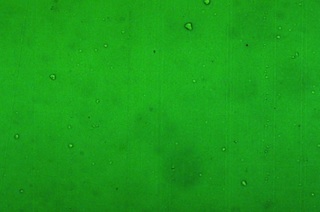


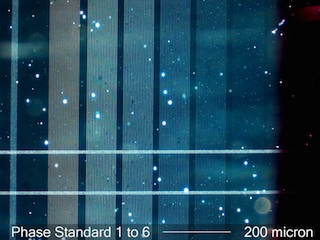
Brightfield vs Oblique Illumination


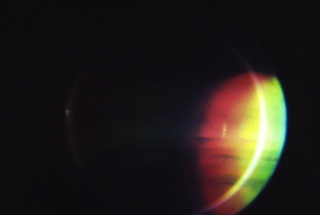
TN.jpg)

Phase Contrast vs Visibility Through the Microscope
Phase contrast microscopy makes "phase" objects more visible. Every object is a
"phase" object strictly speaking but some objects are
primarily phase objects, being nearly invisible using standard brightfield
illumination. Phase constrast does not always improve
visibility. Small objects with significantly different refractive indices than
the medium in which they are mounted will be visible using
darkfield illumination even when they are invisible using phase contrast. The
"Phase Contrast Test Slide" is a good example, as shown
below.
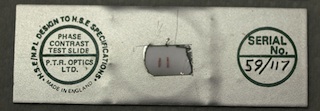


Polarized Light vs Visibility Through the Microscope
Objects with more than one refractive index can be made self-luminous by using
crossed polarized light. This can create sufficient contrast to see the
object.
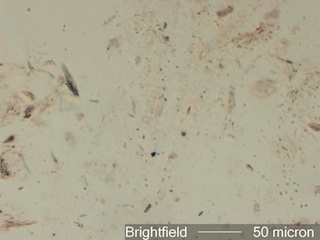
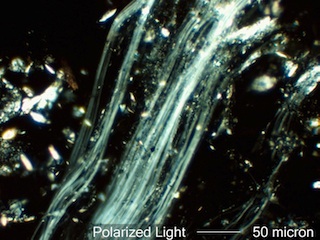
Asbestos Fibers and Visibility Through the Light Microscope
Much has been made of the need for transmission electron microscopy (TEM)
"because the light microscope can't see
asbestos fibers thinner than 0.25 micrometers". This quote is in error on many
counts, but is a common
misconception. First, it is not the microscope that "sees", but rather the human
eye establishes the detection limit.
If the light source is not "on" the resolution limit for the microscope has not
changed but the eye won't see anything.
Second, the ability to "see" (detect) an object is not dependent on resolution.
This point has been made for the general
case above but will be made again here in the specific case of asbestos fibers.
Third, after over thirty years of
diligent searching there has been no evidence that asbestos fibers shorter than
five micrometers cause any health effect
more detrimental than nuisance dust. Fresh crystalline silica is more
detrimental in this respect. That challenges the
"need" for an instrument that can "see" particles that are not apparently
detrimental as a replacement for light
microscopy. We will continue monitoring with the TEM because it is required in
many governement and industrial
regulations, but it is not a "superior" method in the case of hazardous asbestos
detection or identification at sites
of asbestos removal projects.
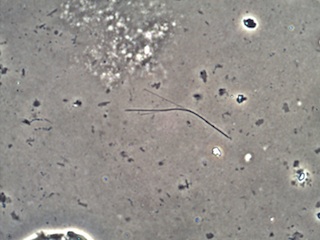
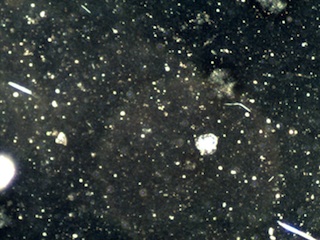
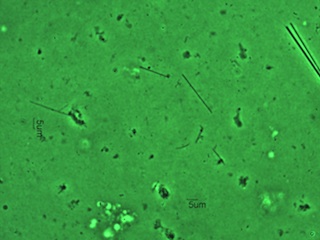
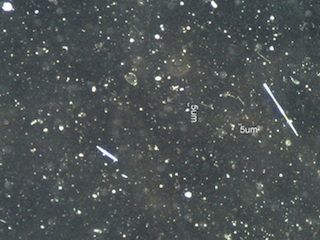

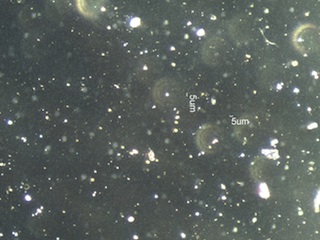

|